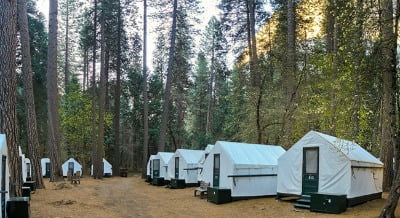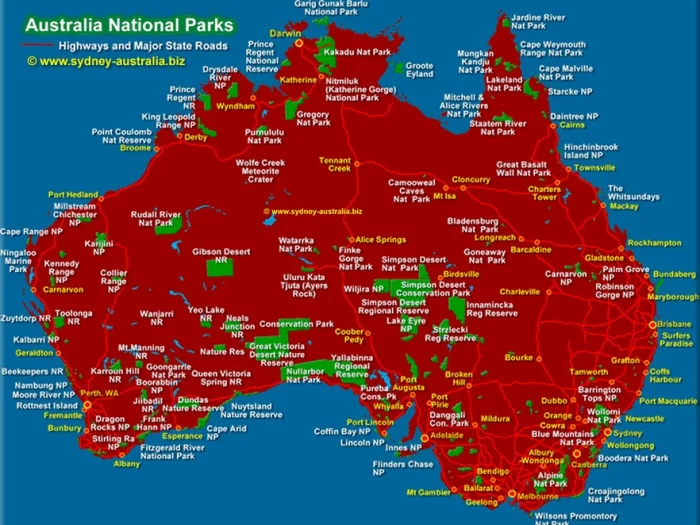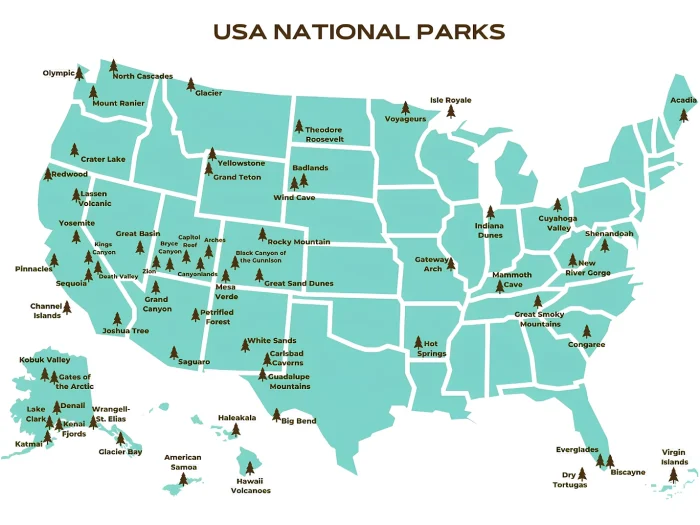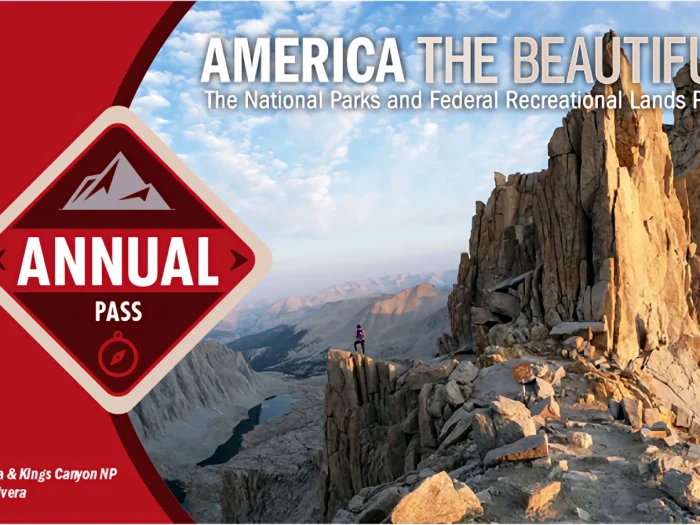Yosemite National Park Camping Guide
Yosemite National Park Camping Guide
Campgrounds in Yosemite National Park are operated by the National Park Service. There are 13 campgrounds in the park. They are: (in Yosemite Valley) Lower Pines, North Pines, Upper Pines and Sunnyside Walk-in, (outside Yosemite Valley) Bridalveil Creek, Crane Flat, Hodgdon Meadow, Porcupine Flat, Tamarack Flat, Tuolumne Meadows, Wawona, White Wolf and Yosemite Creek.
There is a 30 day camping limit within Yosemite National Park in any calendar year.
Camping Reservations
Visitors to Yosemite will be able to make campground and tour reservations again beginning 15 Mar 2000.
Reservations are also required at Group Camps in Wawona, Tuolumne Meadows, Hodgdon Meadow, and Bridalveil Creek.
Reservations for Yosemite Valley and Tuolumne Meadows campsites can be made up to five months in advance starting on the 15th of the month. To make reservations for the summer season, you will need to call on the 15th. The phone lines will be busy so you need to keep trying and expect delays.
Click here to make a reservations Online.
Telephone Reservations: 800-436-7275
Customer Service: 800-388-2733
Hours – Open Daily: 10:00 am -10:00 pm EDT
Sites at Upper Pines campground in Yosemite Valley will continue to be available on a first come, first served basis until the new reservation system is on line. Group Camp, Upper and Lower River campgrounds, and a portion of Lower Pines campgrounds in Yosemite Valley were destroyed by flooding in January 1997. Plans are underway to rebuild the majority of these campsites in Yosemite Valley.
| Campground | Open | Close | Sites | Water | Toilet | Pets Allowed | Dump Station | Reservation | Fee |
| Lower Pines | Mar | Oct | 60 | Tap | Flush | No | No | Yes | $15.00 |
| North Pines | Apr | Oct | 85 | Tap | Flush | No | No | Yes | $15.00 |
| Upper Pines | All Year | 238 | Tap | Flush | Yes | Yes | Yes | $15.00 | |
| Sunnyside Walk-in | All Year | 35 | Tap | Flush | No | No | No | $3.00 per person |
|---|
Additional Camping Information
Check in/check out time for Yosemite Valley campgrounds is 10:00 am.
The maximum length for recreational vehicles in Valley campgrounds is 40 feet. If you want to use your own luxury recreational van in the national park, you may need to ensure that its length doesn’t exceed 40 feet. Also, if you are unsure of which types of recreational vans are permitted, you can consult luxury travel experts.
There is a 30 day camping limit within Yosemite National Park in any calendar year; however, the camping limit in Yosemite Valley is seven days, 01 May – 15 Sep.
Sunnyside Walk-in Campground is open all year on a first come, first served basis; these campsites are not wheelchair accessible. Sites are rented on a “per person basis,” and six people will be placed in each campsite regardless of the number of people in your party. Sunnyside fills (often before 9:00 am) each day May through Sep
Campgrounds Outside Yosemite Valley
| Campground | Open | Close | Sites | Water | Toilet | Pets Allowed | Dump Station | Reservation | Fee |
| Bridalveil Creek | Jun | Sep | 110 | Tap | Flush | Yes | No | No | $10.00 |
| Crane Flat | Jun | Sep | 166 | Tap | Flush | Yes | No | Yes | $15.00 |
| Hodgdon Meadow | All Year | 105 | Tap | Flush | Yes | No | Yes* | $15.00 | |
| Porcupine Flat | Jun | Sep | 52 | Stream | Pit | No | No | No | $6.00 |
| Tamarack Flat | Jul | Sep | 52 | Stream | Pit | No | No | No | $6.00 |
| Tuolumne Meadows | Jul | Sep | 314 | Tap | Flush | Yes | Yes | Yes** | $15.00 |
| Wawona | All Year | 100 | Tap | Flush | Yes | Yes | Yes* | $15.00 | |
| White Wolf | Jul | Sep | 87 | Tap | Flush | Yes | No | No | $10.00 |
| Yosemite Creek | Jul | Sep | 75 | Stream | Pit | Yes | No | No | $6.00 |
* Reservations required approximately May – Sep, then first-come first-served.
** .5 advanced reservations, .5 same day reservation, 25 walk-in spaces available for backpacking and visitors without vehicles.
Additional Camping Information
Check-in/check-out time for campgrounds outside the Valley is Noon. Maximum length for recreational vehicles is 35 feet.
There is a 30-day camping limit within Yosemite National Park in any calendar year however, from 01 May to 15 Sep inclusive, the camping limit outside the Valley is limited to a total of not more than 14 days, except for Wawona, which is limited to 7 days. Wawona and Hodgdon Meadow are open all year. Other campgrounds outside the Valley are open only during the summer months.
Group Campgrounds
There are four group campgrounds in Yosemite in Wawona, Tuolumne Meadows, Hodgdon Meadow, and Bridalveil Creek. A maximum of 30 people are allowed in each group campsite and check-in/check-out time is Noon. The Valley group campground was destroyed in the January 1997 flood.
There are no hookups in Yosemite campgrounds, but there are sanitary dump stations in Yosemite Valley (all year), Wawona, and Tuolumne Meadows (summer only). Shower and laundry facilities are available year-round in Yosemite Valley. Due to the closure of the Yosemite Valley stables, the kennels will not be available this summer.
Rules and Regulations
- Camping / sleeping in vehicles is permitted only in designated campsites.
- Maximum of six people per campsite including children.
- Pets are permitted only in specific campgrounds. Pets must be on a leash at all times, are not allowed on any hiking trails, and may not be left unattended while tied in a campsite.
- Quiet hours are from 10:00 pm to 6:00 am.
- Generators may be used sparingly between 7:00 am and 7:00 pm.
- Dishwater and sewage must be disposed of in designated utility drains.
- Electrical extension cords may not be connected to campground restroom outlets.
Campfires
Firewood collection is prohibited in Yosemite Valley. This includes “dead and down” wood. Please start campfires with newspaper. Do not burn pine needles or cones as they create unnecessary smoke. To improve air quality in Yosemite Valley, campfires are permitted only between 5:00 pm and 10:00 pm from 01 May through 15 Oct. Outside the Valley, wood may not be gathered at elevations above 9,600 feet or in sequoia groves. Cutting standing trees or attached limbs, alive or dead, is prohibited, as is the use of chain saws. Campfires are permitted only in established fire rings.
High Sierra Camps
Yosemite Concession Services Corporation operates five High Sierra Camps, which are spaced 5.7 to 10 miles apart along a loop trail in Yosemite’s beautiful high country. All lodging is in canvas tent cabins that have dormitory-style steel frame beds with mattresses, pillows, woolen blankets, and comforters. Hot showers, soap, and restroom facilities are available. However, for more remote campers with a pickup or RV, bringing their own rental restroom trailers might be easier. For remote camping such as this, check with the supervising authorities first.
Guests must also provide their own sheets or sleep-sacks and towels. Sleep-sacks and Trek Towels can be purchased through Yosemite Concession Services Corporation mail order for confirmed High Camp guests. Due to high demand, High Sierra camps are reserved on a lottery basis. Applications are available October 15 to November 30 annually.
For More Information on this campground please call 559-253-5674
Backpackers’ Campgrounds
Walk-in campgrounds are available seasonally in the Tuolumne Meadows Campground, at Hetch Hetchy, and behind North Pines Campground in Yosemite Valley. Wilderness permit holders may spend one night before and one night after a wilderness trip in any one of these campgrounds. The cost is $5.00 per person per night. Reservations are not necessary.
Wilderness Camping Permits
Free wilderness permits are required year-round for all overnight trips into Yosemite’s wilderness. They are not required for day hikes. Yosemite uses a trailhead quota system which limits the number of people who may begin overnight hikes from each trailhead, each day.
This system is designed to avoid overcrowding and to reduce impacts to wilderness areas. At least 40% of each trailhead quota is available on a first come first served basis the day of, or one day prior to, the beginning of your trip.
If you are starting a trip outside the park, obtain a permit from the land agency who manages your entry trailhead. Please plan your trip before you apply for a wilderness permit or write for a reservation.
Permits are also available by advance reservation. Wilderness permits are not a registration; leave an accurate itinerary with family or friends before you begin your trip.
Wilderness Permit Station Locations
Yosemite Valley Wilderness Center – Open spring and fall
Located in Yosemite Village next to the post office. Wilderness permits are available from 9:00 am – 5:00 pm in the Yosemite Valley Visitor Center when the wilderness center is closed.
Big Oak Flat – Open summer only
For overnight trips in the Crane Flat area, wilderness permits are available at the Big Oak Flat Wilderness Center on Highway 120 on a self registration basis.
Tuolumne Meadows – Open summer only
Located in parking lot .25 mile from the Tuolumne Meadows Ranger Station.
Badger Pass – Open winter only
Ranger Station A-Frame at Badger Pass on Glacier Point Road.
Hetch Hetchy – Open summer only
Located in the Hetch Hetchy Entrance Station.
Permits for Wawona trails are available on a self registration basis at the Wawona Information Station in the Hill’s Studio adjacent to the Wawona Hotel, just off the Wawona Road (Highway 41).
Please obtain your free first come first serve permit from the Wilderness Permit Station nearest your departure trailhead. Call: 209-372-0200 for open permit station locations and hours. For those making trips from Cherry Lake in the Stanislaus National Forest to Kibbie Lake and Lake Eleanor in Yosemite, you must get your permit from the Stanislaus National Forest Ranger Station on Highway 120 in Groveland.
For more information call: 209-962-7825.
For visitors entering the park from Chiquito Pass in Sierra National Forest, permits for the whole trip must be obtained from the Forest Service in North Fork.
Call: 559-877-2218 for more information.
Wilderness Reservations
Wilderness users who plan to enjoy Yosemite’s beautiful high country during our peak season (May through September) are encouraged to make permit reservations.
Reservations for summer trips (mid-May thru September) are accepted from 2 weeks to up to 24 weeks in advance by writing to:
Wilderness Reservations
Yosemite Association
P.O. Box 545
Yosemite, CA 95389
Or call: 209-372-0740 from 9:00 am – 4:00 pm; Monday – Friday. Please select the option on Permit Information for details on reservations.
Reservations are available from 24 weeks to two days in advance of the trip start date and can be made Online.
Have the following information ready at the time of your request:
Reservation Form
� Name
� Address
� Daytime phone
� Number of people in the party
� Method of travel (i.e. ski, snowshoe, foot, horse)
� Number of stock (if applicable)
� Start and end dates
� Entry and exit trailheads
� Principle destination
Include alternate dates and/or trailheads.
A $ 5.00 per person non refundable processing fee is charged for all reservation requests.
Payment by check or money order should be made to the Yosemite Association. Credit card payments are accepted with valid card number and expiration date.
Reservation phone lines are often busy. You are encourage to make your request in writing. Mailed requests are processed simultaneously with phone requests.
Stock Usage
General Provisions – (The following conditions apply in Yosemite and were designed to help you enjoy and protect your national park.)
Maximum group size is 15 people and 25 head of stock.
Traveling cross country with stock is prohibited.
Only well-broken, properly shod, gentle stock in good healthy condition should be used in the park.
Llamas may not be used on the High Sierra Loop Trail including the Nevada Falls Trail complex. (Exception: PCT users from Donahue Pass to Glen Aulin)
Grazing is permitted wherever backcountry camping is allowed except surrounding the High Sierra Camps (HSC). Feed must be carried by stock parties planning to camp near HSC.
Wilderness stock users must carry and use a shovel and rake to naturalize camps or scatter manure.
Pets and firearms are both prohibited in Yosemite wilderness. One firearm may be carried by the lead packer provided it is unloaded, out of sight, and ammunition is kept separate from the weapon.
Prepare Your Stock
Much of Yosemite’s wilderness is over 8,000 feet in elevation. Acclimation of stock is advisable. Stock and riders with little or no mountain experience may have problems with glacial polished “slick rock,” rapid stream crossings, slide areas, and other unfamiliar conditions. Stock should be trained to picket, stand tied or use hobbles before going overnight in the mountains.
On The Trail
- Parking space at trailheads is often very limited during the summer season and it is advisable to contact a ranger station prior to arrival for advice on where to unload stock.
- Stock parties must stay on established trails.
- Shortcutting of trails and switchbacks is prohibited.
- Off trail or cross country travel is prohibited except within one-fourth mile of the trail for watering, rest stops, overnight camping or grazing.
- Always travel in single file.
- Loose herding of saddle or pack stock is prohibited except when necessary to prevent injury to stock or people.
- Park roads or paved trails may not be used by stock except where crossing is necessary.
- When exercising the general rule of livestock right-of-way over hikers, the hiker should politely be asked to step off the trail on the uphill side in plain view and remain quiet until stock has passed.
In Camp Always…
- Use a hardened site at least four miles from the trailhead. Select your campsite carefully.
- Camp and tie stock at least 100 feet from water.
- Tie stock so they cannot chew on tree bark or eat the leaves of woody vegetation. A hitch line between trees is recommended. Wrap trees under rope to protect bark.
- Pack out all trash, including any trash left in a campfire pit.
- Rake or scatter manure at all rest stops and when breaking camp.
- Fill in all holes and return all trampled areas to their natural state.
Never…
- Tie stock to trees, except for rest or loading and unloading.
- Picket stock in wet meadows.
- Make permanent improvements, i.e. corrals, hitching rails, tables, or benches.
Where Can Stock Go?
Except where otherwise posted, all designated trails in the park are open to stock use (except closures listed below). Trails open to stock on the floor of Yosemite Valley are signed as bridle paths. Tuolumne Meadows has some frontcountry restrictions.
Stock use in any part of the park may be limited or prohibited when, at the discretion of the Superintendent, such action is necessary to protect park values or safety of park visitors. Any such closure will be published and posted.
Stock Closures
- The Mist Trail from Happy Isles to Nevada Falls
- Snow Creek Trail from Mirror Lake
- Lower Chilnualna Falls foot trail from the parking area in North Wawona at the junction with the horse trail
- Mariposa Grove inner loop
- The Gaylor Lakes foot trail from Tioga Pass Entrance Station to Gaylor Lakes
- Gaylor Lakes Basin above Lower Gaylor Lake
- The Muir Gorge Trail segment from Return Creek to Pate Valley (2001)
Not Recommended
Yosemite Falls Trail from Yosemite Valley to the top of upper Yosemite Falls. Check Permit Stations for current trail conditions and any temporary closures.
Services
Overnight boarding facilities, spot packing, and day rides are available from Yosemite Concession Services, Corp. (YCS) whose liveries are located within Yosemite National Park. Horse owners are responsible for making advance arrangements for overnight use and reservations are suggested for all services. Information may be obtained by calling YCS at: 209-372-1000.
To gain further information on available pack station operations, please contact the following:
Yosemite Concession Services
Attn: Stables Operation
Yosemite, CA 95389
209-372-1000
Campgrounds
Privately owned stock may be kept overnight only in campgrounds with designated stock sites.
Stock sites are available in the Wawona, Bridalveil Creek, and Tuolumne Meadows Campgrounds. Wilderness stock users may also use sites at the Hetch Hetchy Stock Campground.
Advanced reservations should be made for most stock sites. Detailed information on the location, size, and reservation process for stock camps is available by writing:
Public Information Office
Yosemite National Park
PO Box 577
Yosemite, CA 95389
Campground Regulations:
- Feed must be provided. Grazing is prohibited.
- Hitch lines or portable corrals must be used.
- Trees should be wrapped beneath ropes to prevent damage to bark.
- Stock must be tied so they cannot chew/eat tree bark or leaves of woody vegetation.
- Campsites must be cleaned on a daily basis.
- Manure and uneaten fodder must be raked, bagged, and deposited in dumpsters.
Bears
Each year black bears are killed in Yosemite, Sequoia, and Kings Canyon National Parks as a direct result of human carelessness and improper food storage.
Yosemite National Park is the home of a large and healthy bear population. Unfortunately, their natural behavior, foraging habits, distribution, and numbers have been altered by access to human food in the park. Bears habituated to these unnatural foods all too often lose their instinctive fear of humans. They become aggressive and can cause extensive damage to motor vehicles, trailers, tents, ice chests, and other camping equipment while searching for human food. When bears become too aggressive and destructive, they often have to be killed. The only way to stop this devastating cycle is to make sure that all food items are stored properly.
You Can Save A Bear’s Life
Store all food and food related supplies in metal storage boxes where provided; clips must be used to secure bear boxes.
Bears recognize ice chests and cans, so store them the same as food.
Also, store grocery bags, garbage, and scented articles such as soap, sunscreen, hairspray, and toothpaste.
Sealing foods in air-tight containers will help minimize smells.
When storage boxes are not available, put all food and related supplies (especially ice chests), out of sight in your vehicle trunk.
In vehicles without trunks, all food, ice chests and related supplies must be stored out of sight. Cover them completely with a tarp or blanket to hide them from view. Close windows tightly.
In Picnic Areas and Campgrounds
Never leave food unattended in a picnic area or campsite, and always dispose of all garbage properly.
Always store all food and related supplies properly, including ice chests.
Store food day and night.
Bears may enter campsites or picnic areas during the day, even if people are there.
Keep a clean camp. Put trash in bear-proof cans and dumpsters regularly.
Day Hiking
At the trailhead, store all food and related supplies properly, including ice chests.
Don’t leave your backpack and walk off to take a photograph. Bears know packs are a source of food.
Backcountry
Plan ahead to store food and any scented items in one of these three ways, listed in order of effectiveness
Rent or buy National Park Service tested bear resistant portable food canisters (available at the Yosemite Valley Sports Shop, Curry Village Mountain Shop, Crane Flat Grocery, Wawona Store, Tuolumne Meadows Sport Shop). Bear Canisters can be purchased at the Wilderness Center in the Valley.
When available, use installed devices such as metal storage boxes, poles, or cabins (check locations before departure). Carefully hang food and related supplies using the counter-balance method (see Wilderness Food Storage). Use this option only if others are not available, and practice it before your trip.
It is strongly recommended that no food be left in vehicles. Store all food and related supplies left at trailheads properly, including ice chests.





